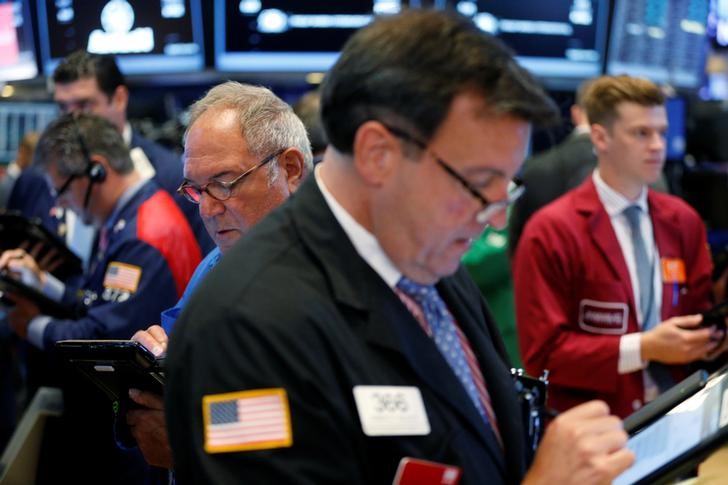By Saqib Iqbal Ahmed
NEW YORK (Reuters) – Judging by the way hedge funds have been betting on Wall Street, they see U.S. stock market volatility remaining low, but it may not be that simple.
CBOE Volatility Index (VIX) futures contracts allow a play on implied volatility in stock prices and can provide a hedge on equity returns, but big speculators are currently net short114,088contracts in VIX futures,just under the record level set earlier this month,according to U.S. Commodity Futures Trading Commission positioning data throughAugust 16. After trading in a range for most of the past year, U.S. stock prices recently broke out to record highs and hedge funds have reluctantly bought into the rally. Their net long/short exposure has increased to 22.8 percent, a top quartile level, but still shy of the 5-year peak of 24.5 percent set last December, according to Credit Suisse data. On the face of it, the CFTC data could be seen as evidence that speculators strongly believe in the lasting power of the recent rally in equities and expect the CBOE Volatility Index <.VIX>, which is near historic lows, will remain subdued. “That’s not exactly right,” said Maneesh Deshpande, head of equity derivatives strategy at Barclays.
Deshpande and other derivatives market experts say speculators are to a large extent just selling VIX futures to the issuers of exchange-traded products (ETPs) who need protection against volatility. With the S&P 500 stock index <.SPX> near a record high, demand for these is quite strong.
For instance, money flows into the iPath S&P 500 VIX Short-Term Futures ETN “Strong inflows into long VIX ETPs means the issuers of these products have to go and buy VIX futures,” Rocky Fishman, equity derivatives strategist at Deutsche Bank.
Even in the absence of those inflows, the way these ETP products work means that as market volatility declines it requires these product issuers to buy more VIX futures contracts.
It is in response to this strong demand for VIX futures that speculators have ramped up the selling of VIX futures. Essentially, these funds are acting as liquidity providers, not making outright bets. THIRST FOR PROTECTION
Over the last month and a half, as stocks rallied, investors have been loading up on ETPs that profit from a jump in volatility. Roughly $1.73 billion has poured into long VIX ETPs since the start of July, according to Deutsche’s Fishman. Investors may be looking to protect recent gains, or simply betting that stock market volatility has drifted too low and the CBOE Volatility Index <.VIX> is ripe for a rally.
Friday was the 13th straight session when the VIX closed below 13, the longest the index has lingered so low in about two years.
With less than three months to go before the U.S. presidential election on November 8th stocks may fall and volatility may rise as investors assess the political risk to equities.
Speculators selling VIX futures may suffer if volatility rises too quickly but much of their short position is likely to be hedged, analysts said.
“They might be selling the front one or two month VIX contracts but then they are buying the (further out) contracts as a hedge, or they might be short S&P 500 and short VIX futures simultaneously,” said Nitin Saksena, head of U.S. equity derivatives research at Bank of America Merrill Lynch. “They are not as exposed to a rise in volatility as you might think,” he said.
The risk is if the market moves violently, leaving those with short positions with little time to monetize their hedges.
In the event of a decline on the S&P 500 index like the one seen in August 2015, when it lost as much as 11 percent over the course of four days, the large short positioning could trigger even more volatility. (Reporting by Saqib Iqbal Ahmed, additional reporting by Jennifer Ablan; Editing by Rodrigo Campos and Dan Burns)
Analysis: Focus on VIX futures shorts hides the real story

By Saqib Iqbal Ahmed
















